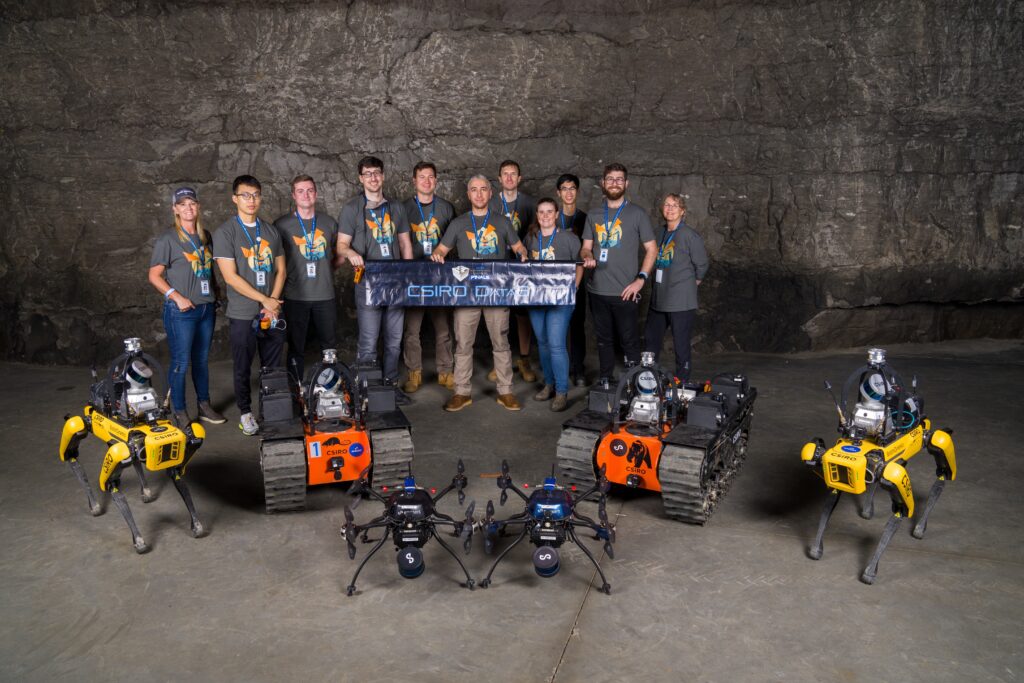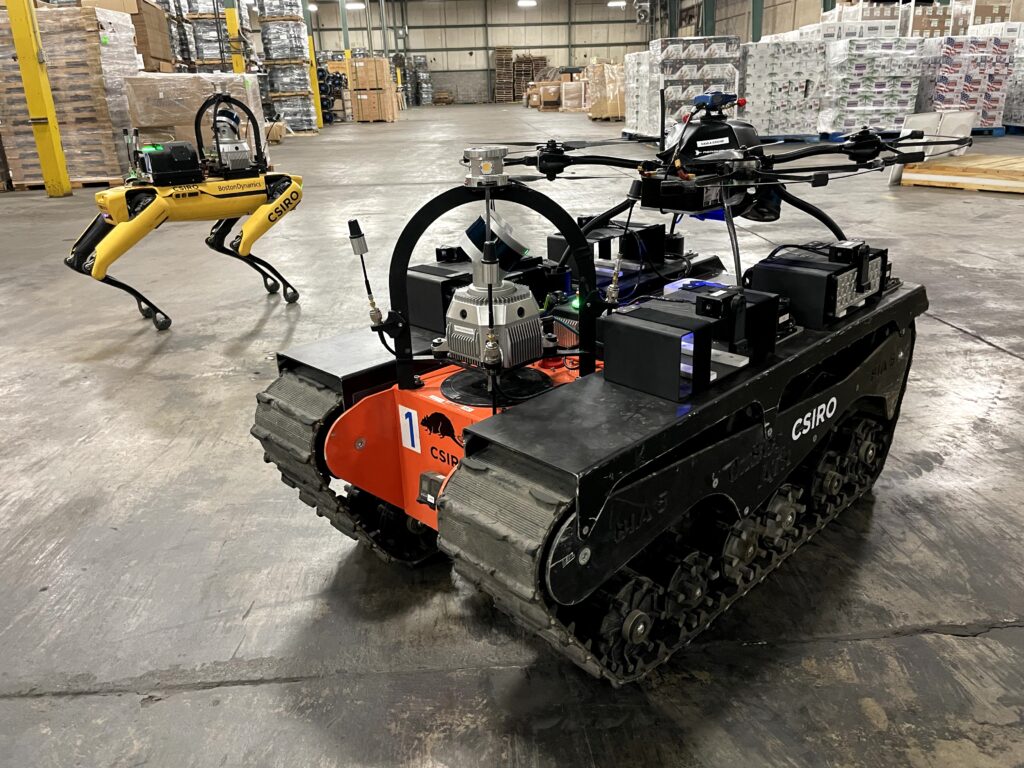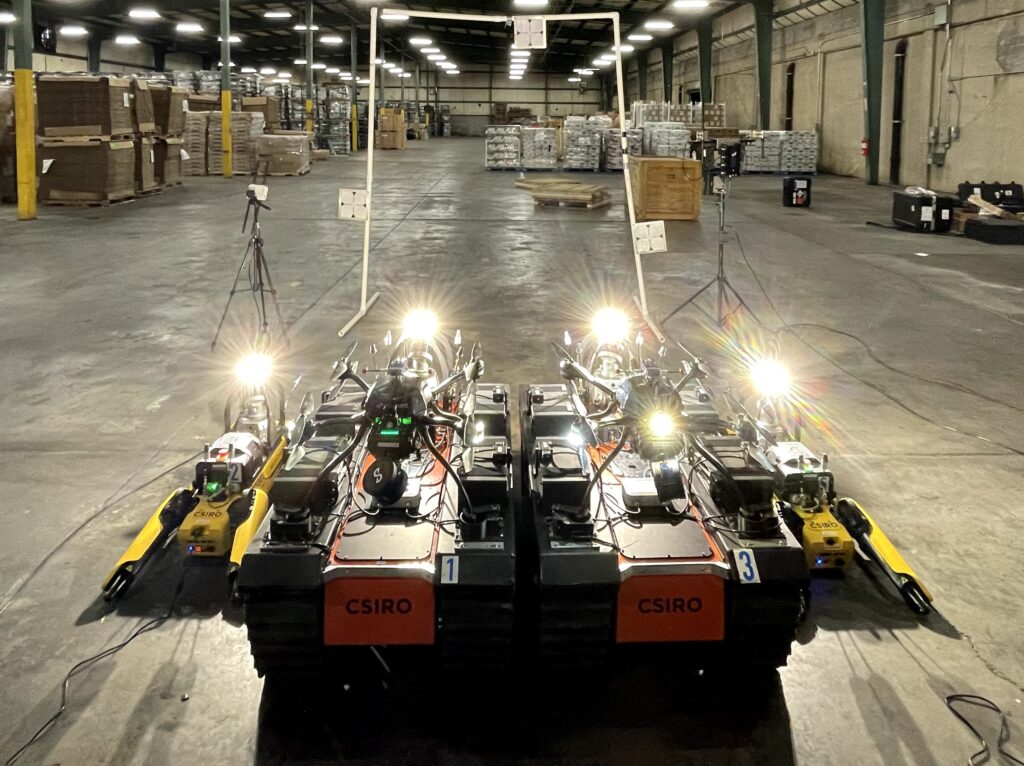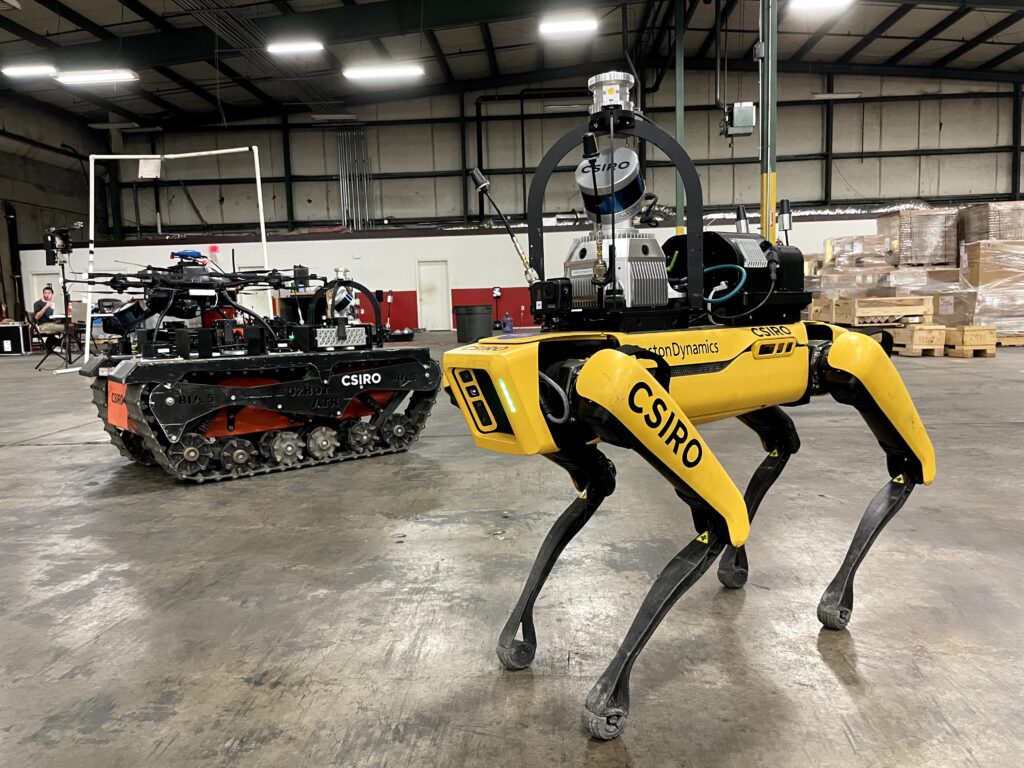IEEE Spectrum’s Evan Ackerman had a Q&A with the CSIRO Data61 DARPA SubT Challenge team Principal Investigator Navinda Kottege
How have you been preparing for the SubT Final?
Test, test, test. We’ve been testing as often as we can, simulating the competition conditions as best we can. We’re very fortunate to have an extensive site here at our CSIRO lab in Brisbane that has enabled us to construct quite varied tests for our full fleet of robots. We have also done a number of offsite tests as well.
After going through the initial phases, we have converged on a good combination of platforms for our fleet. Our work horse platform from the Tunnel circuit has been the BIA5 ATR tracked robot. We have recently added Boston Dynamics Spot quadrupeds to our fleet and we are quite happy with their performance and the level of integration with our perception and navigation stack. We also have custom designed Subterra Navi drones from Emesent. Our fleet consists of two of each of these three platform types. We have also designed and built a new ‘Smart node’ for communication with the Rajant nodes. These are dropped from the tracked robots and automatically deploy after a delay by extending out ground plates and antennae. As described above, we have been doing extensive integration testing with the full system to shake out bugs and make improvements.
What do you think the biggest challenge of the SubT Final will be?
The biggest challenge is the unknown. It is always a learning process to discover how the robots respond to new classes of obstacle; responding to this on the fly in a new environment is extremely challenging. Given the format of two preliminary runs and one prize run, there is little to no margin for error compared to previous circuit events where there were multiple runs that contributed to the final score. Any significant damage to robots during the preliminary runs would be difficult to recover from to perform in the final run.
What is one way in which your team is unique, and why will that be an advantage during the competition?
Our fleet uses a common sensing, mapping and navigation system across all robots, built around our Wildcat SLAM technology. This is what enables coordination between robots, and provides the accuracy required to locate detected objects. This had allowed us to easily integrate different robot platforms into our fleet. We believe this ‘homogenous sensing on heterogenous platforms’ paradigm gives us a unique advantage in reducing overall complexity of the development effort for the fleet and also allowing us to scale our fleet as needed. Having excellent partners in Emesent and Georgia Tech and having their full commitment and support is also a strong advantage for us.
Read the full article here: Your Guide to the DARPA SubT Finals: Meet the Teams: How the eight Systems Track teams are approaching the final event
- CSIRO Data61 team
- CSIRO Data61 robot team
- CSIRO Data61 robot team
- CSIRO Data61 robot team




